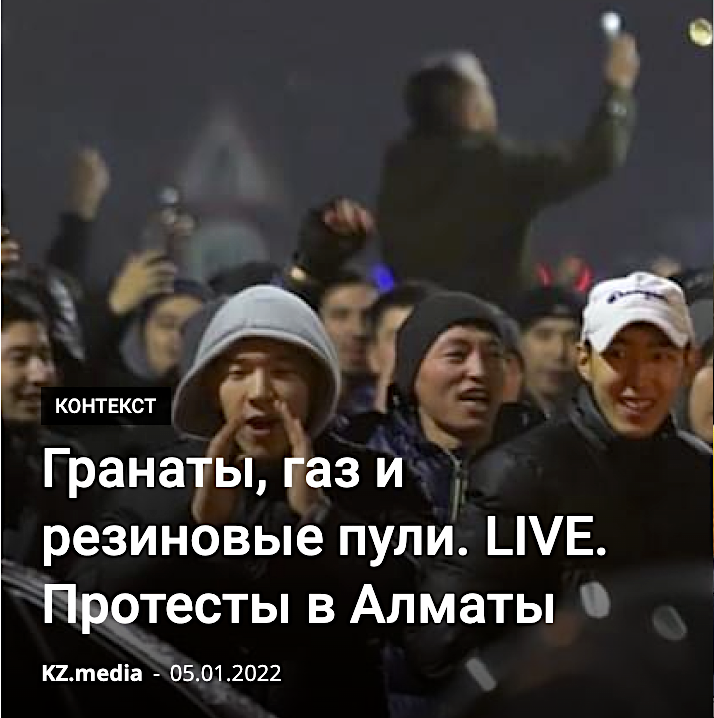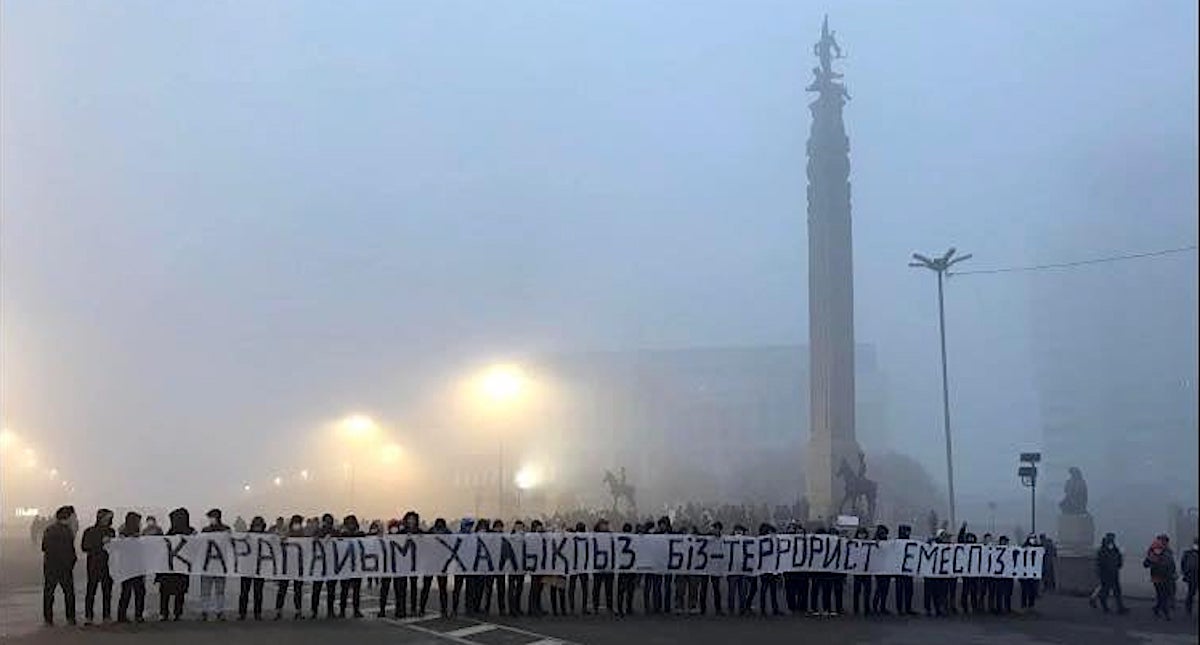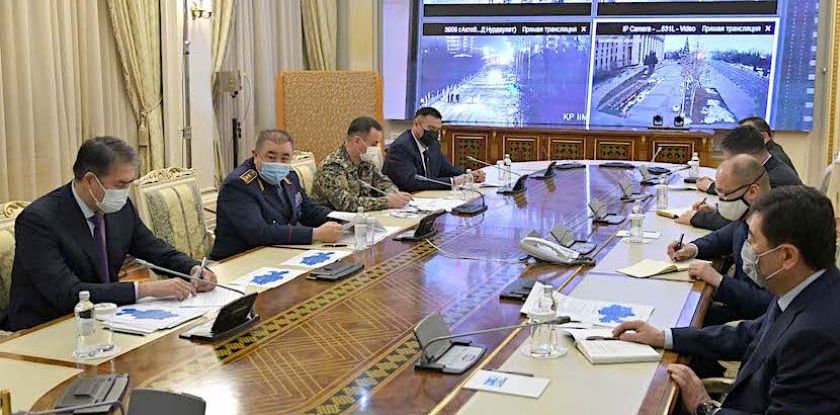The latest tragic events in Kazakhstan have sparked an unprecedented interest towards the country all around the globe. At the same time, the information access both inside the country and beyond its borders is being seriously hampered by the total blocking of the Internet and mobile communication. As a result, no one has got a comprehensive picture of what is going on which, as we strongly suspect, includes President Kassym-Jomart Tokayev himself.
We at KZ.expert believe Kazakhstan has experienced what the Library and Akorda were scared of the most and what was least expected of by the experts – an explosion of the protest sentiments.
 Let us try and analyse the recent developments as objectively as possible based on the existing photo- and video-materials and taking into consideration our knowledge of the Kazakh authorities, the inter-elite and inter-clan setups.
Let us try and analyse the recent developments as objectively as possible based on the existing photo- and video-materials and taking into consideration our knowledge of the Kazakh authorities, the inter-elite and inter-clan setups.
There can be no doubt that it was the massive-scale protests in the Western Kazakhstan that had served as the ignition device triggered by the dual-fold increase of the liquid gas retail prices that took place just after the New Year. And when the authorities gave in to the protestors’ demands and decided to reduce the retail prices to the previous level (albeit for only a half a year), the protestors realised that the authorities were scared of them and started asking for more.
In our opinion, such complaisance on the part of the authoritarian political system stems from the fact that Akorda remembers full well the Zhanaozen events of December 16, 2011 and the consequences that followed. Therefore, it chose not to take any risks. And it looks like this decision has cost it a bundle.
 The weakness of the authorities demonstrated in respect to the protesters in the Western Kazakhstan has triggered a wave of protests in the other regions of the country. In view of this, both the number of the protestors and the number of the residential areas where the protests took place had risen in a drastic way. After this, for the first time in the past couple of decades, the “super-presidential” vertical has lost the power advantage at the local level.
The weakness of the authorities demonstrated in respect to the protesters in the Western Kazakhstan has triggered a wave of protests in the other regions of the country. In view of this, both the number of the protestors and the number of the residential areas where the protests took place had risen in a drastic way. After this, for the first time in the past couple of decades, the “super-presidential” vertical has lost the power advantage at the local level.
If, previously, the police and the NSC officers successfully managed to arrest the few people protesting since, as a rule, the number of the latter was significantly larger than the number of the former. And the special equipment was of no use since they did not have permission to fire live bullets.
And here another factor began to play its part – the feeling of impunity.
At the initial stages of the protest, the number of the protestors prepared to take radical action was significantly lower than the number of those who simply wanted to express their discontent. At the same time, the biggest parts of the crowds formed in the first days in the squares in front of the governmental buildings consisted of observers who just wanted to watch what was happening.
However, when it became clear that the siloviks had lost their power advantage and were not firing live bullets using only their shields, batons, flash-bang grenades and the equipment that cannot kill, the mood of the protestors began to change.
Apart from that, the aggressive moves on the part of the policemen that, this time, not so much frightened the people off as provoked them to fight back have played their role as well.
And then, across the board, events began to unfold in the way that we had observed so many times before during the local “conflicts” when those who initiated the protest were joined by a crowd of those wishing to line their pockets, in other words, to loot and cut loose and do so with impunity.
In their turn, Akorda and the Library, having found themselves in such dire a situation when they began to rapidly lose control of the country, chose to concentrate all the state and political power in the hands of Kassym-Jomart Tokayev. For this reason, he has unexpectedly (and, by the way, illegally) replaced Nursultan Nazarbayev as the Chairman of the Kazakh Security Council as well as dismissed Chief of the NSC Karim Masimov and his First Deputy Samat Amish, the Elbasy’s nephew.
As a result, today the Kazakh authoritarian political system and the “super-presidential” vertical have once again become monolithic whereas Nursultan Nazarbayev and his clan have formally stepped into the background in order not to stand in the way of the Elbasy’s successor restoring the order in the country and ensuring relative security.
As for Kassym-Jomart Tokayev’s request that the CSTO supports him with “the peacekeeping forces”, it can perhaps be explained by the fact that Kazakhstan has never had a strong force constituent. While the total number of the MVD RK officers constitutes more than 100 thousand people, the authorities can take to streets no more than 30-40 thousands of them.
Add to them 20-30 thousands soldiers of the National Guard and 20-30 thousands members of military personnel (of the total 80 thousands members of the RK Armed Forces).
In other words, only 70 to 100 thousands siloviks could challenge the protestors. If we subtract the number of the killed, injured, scared off and taken the side of the protestors, we will be left with approximately 50 thousands. This is too few for such a vast country especially considering that the protestors have “smelled the blood”so to speak and realised that they could bring home the bacon.
We are not going to predict the further developments (who wins, when and by what cost), however, it is already evident that Kazakhstan is not going to be the way it has been until January 1, 2022, and that the authoritarian system and the “super-presidential” vertical have sustained such a powerful blow that they may not make it.
However, if they do, it is going to happen by one means only – first, via toughening the repressions and, then, via reinforcing the repressive machine and consolidating the ruling elite around Kassym-Jomart Tokayev. Or, if he doesn’t manage, around some other Nursultan Nazarbayev’s “product”.





